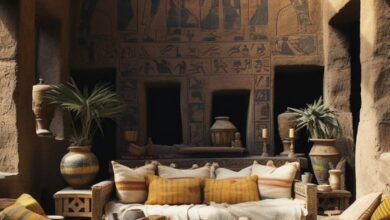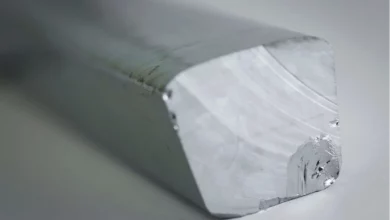Young Egyptian scientist Essam Heggy is described in western circles of knowledge as the "Man of Mars". He is one of eight scientists at US space agency NASA whose mission is to explore Mars and prepare for a human landing on the red planet in the year 2020. Arab media research centers however hardly know him.
Heggy, who rapidly climbed upwards through NASA and now provides training to astronauts, is a graduate of Cairo University. He resigned as a teacher assistant there due to "red tape" which prevented him from renewing his scholarship and continuing his research at NASA.
Al-Masry Al-Youm spoke to Heggy in an interesting and outspoken interview:
Al-Masry Al-Youm: First, tell us about your current role in NASA?
Essam Heggy: Currently […] I am one of eight experts responsible for follow-up signals coming from Mars around the clock. In addition, I regularly coordinate with astronauts and train them in the use of radar imagery techniques to identify the geophysical properties of areas where ice is concentrated under the surface of Mars and the moon.
Almost a year ago, I moved from the Institute of Space Research in Houston to NASA general command and its affiliate the Mars Exploration project center in Los Angeles. Now I am in charge of space vehicles as well as the head of the research team at the missile propulsion plant, which is the biggest and most famous laboratory at NASA.
Al-Masry: Two years have now passed since the spacecraft "Mars Express" landed for the first time on the surface of Mars using imagery devices that you developed. How is the Mars exploration project developing now?
Heggy: I think we have come a long way in exploring the moon and Mars. Following the launch of Mars Express and MRO orbiters in 2004, we launched two new spacecraft, one in collaboration with India, and the other at NASA. We then developed special training for astronauts including reality simulations for situations that astronauts might encounter revisiting the moon or on their visit to Mars in 2020.
Al-Masry: What have been the results of the space expeditions so far?
Heggy: The most important outcome was the discovery of ice beneath the surface of Mars. We all know that we live alone in the solar system, but what is exciting is when the results of your research say that there might have been life on Mars. This is based on the discovery of of water and ice on Mars. We want to know if there were living things on Mars thousands or millions of years ago. This is what we want to find out in 2020.
Al-Masry: What is your role in preparing the spacecraft to travel to Mars?
Heggy: My role revolves around designing and following up the functioning of radar imagery devices installed on the craft, which may provide clear images of the locations of water on the surface of the moon and Mars. I also provide training to astronauts on how to use these devices and in reality simulations. Also, my research team and I have finally managed to identify the nearest ice areas on the surface of the moon from which water can for the first time be generated.
Al-Masry: What is the significance of these discoveries?
Heggy: I think that the project of discovering ice and water on the surface of the moon is the most important finding following the Apollo flight in the early 1970s. There is however a slight difference in our study this time, in that astronauts would return to the moon at the end of 2020 not to make a place there for humans to live, but to create a permanent station for space flights to explore the solar system. Our job here centers around training astronauts in the extraction of water from beneath the surface of the moon for personal use during their stay and the generation of hydrogen as a fuel for spacecraft to return to Earth. The moon would thus become an orbiting station that would serve as a springboard to the rest of the planets.
Al-Masry: What do you think of space tourism and will the extraction of water from the moon increase space tourism?
Heggy: Space tourism is for curiosity’s sake rather than for scientific purposes. Curiosity alone is not bad and some of the rich around the world wish to have this experience. But living on the moon is not a goal within reach in the foreseeable future. The purpose of work on the surfaces of the moon and Mars is to understand the affinities between them and the Earth, so that we can predict the future of our planet and better understand how it used to be in the past.
Al-Masry: Why can Mars in particular help us better understand our small planet?
Heggy: If we know that Mars and Earth were twins, one still living and the other turned into a desert by astronomical factors, this can help us realize the impact of climate change, which is getting much worse on Earth. The planet Venus represents a primitive state similar to that experienced by Earth before life emerged on its surface.
Al-Masry: Are there other uses for radar photography on Earth?
Heggy: Of course. This technology can be used to determine precisely where water is in the desert. In fact, all sub-terrestrial wealth, including oil and monuments, can be located using this method. Locations of landmines can also be pinpointed and clear maps of them drawn using satellites. Developing and advanced countries can both make use of this state-of-the-art technology.
Al-Masry: Have any regions in Egypt been photographed by radars recently?
Heggy: Yes, the Bahariya Oasis in 2005. We used the technology for the first time there. We found out where underground water was in the western desert. Cairo University and the Egyptian Survey Authority cooperated with us, though the photography was primarily done to test how useful the technology was rather than for discovery purposes. Analyzing the data requires enormous computers and specialists who aren’t yet available in Egypt. It’s a shame the university couldn’t have benefited more.
Al-Masry: Why was the Western Desert in particular used to test the spacecraft to be sent to Mars?
Heggy: There’s a similarity between the geology of the Western Desert and Mars that was first noted by Farouq el-Bazz in the late 1960s. In addition, I was driven by a human motive as an Egyptian who wants Egypt to benefit from radar photography by exploring the desert in search for water.
Al-Masry: The last time you were in Egypt was one and a half years ago and at that time you submitted your resignation from Cairo University. Are you still insisting on your resignation?
Heggy: Unfortunately, I have no choice but to resign, because the university refused to renew my scholarship for more than three years, during which time I obtained a PhD in space science from the University of Paris. After that, I was delegated to the global project to explore Mars. When I asked for my scholarship renewal to NASA, I was surprised by the administrative complexities because Article 117 prevents prolonging scientific missions for more than three years; what is strange is that they told me to ask for leave to accompany my wife.
I felt that the red tape and regulations were more important to them than scientific research. Astonishingly, my resignation, which was earlier rejected by Ali Abdel Rahman, the former president of Cairo University, has not so far been resolved.
Al-Masry: Do you have a problem with Cairo University?
Heggy: I have no personal problem with the university and I respect its entire scientific staff and excuse them, because I worked as a government employee for three years. I understand all the difficulties and the red tape in Egypt. I haven’t become frustrated on a personal level, but I’m disappointed, because I always hear about making use of Egypt’s scientists from abroad, though I haven’t seen it happen. In fact, our scientists are repelled; they don’t come back except on short visits to meet their families. After Al-Masry Al-Youm wrote about the problem of my resignation, my mailbox was flooded with tens of emails from Egyptian scientists who were faced with the same issues. Some of them had reached high ranks at the universities of Cambridge, Harvard and Oxford.
Al-Masry: How do you feel when you come up against such complex procedures and compare these with the status of scientists and researchers abroad?
Heggy: What scares me most is the future. We are way behind when it comes to development. In France, for instance, they have a strategic vision for their scientific status, and they have a sense of responsibility towards their youth. Comparing Egyptian researchers to those abroad is unfair, and it’s not just about their living conditions. Their research work isn’t implemented. But we always tend to blame limited capacities, and say that Arab universities suffer from lack of resources, rather than addressing the problems of red tape and favoritism as a determining factor in promotions.
Al-Masry: Why do you think you succeeded in your practical life abroad?
Heggy: My success started in Egypt. I graduated from a public school and a public university. I recall my secondary teacher rejecting my idea of studying astronomy at university. But the opportunity that came my way saved me from the destiny that awaited my colleagues in the Astronomy Department at Cairo University Faculty of Science. It pains me to see the conditions of my colleagues here, it’s pathetic, and most of them have transformed into employees who “sign in and sign out” and that’s it. They do research only to get promoted. The problem is that education has separated itself from reality, because all we care about is getting certificates.
Al-Masry: So are we going to see you soon on an exploration mission in the Western Desert?
Heggy: I hope so. I was happy with my last visit to Cairo, because it was the first time that I used my Egyptian passport to enter into Egypt. Also my daughter has been added to my passport. But my problem with bureaucracy doesn’t end when I leave Cairo Airport. All I hope for is to be able to allow NASA’s research equipment into the country on my upcoming visit to the Western Desert and the oases in February 2010. In 2005, the robots and spacecraft were held for a week until customs were paid, as though they were home appliances. They were only released after we’d contacted certain officials. I wonder how those spacecraft which I designed were able to reach Mars without any obstacles, but had to suffer so much to be allowed into the Western Desert in Egypt?
Translated from the Arabic Edition.




